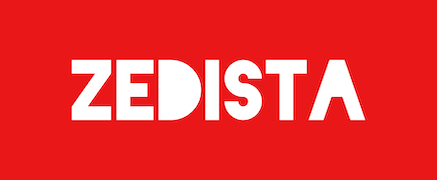- During periods of high inflation, companies often downsize products so they can keep prices unchanged.
- This is because consumers are price-sensitive but may not notice subtle changes in packaging or read details about the size or weight of a product.
- Despite this approach being legal, it can lead to customer complaints and has even sparked a lawsuit.
Do consumers notice when their everyday products get smaller? Often they don’t and companies are taking advantage by reducing the amount of product they sell while keeping prices the same. Shrinking product sizes to pad profits is not a new tactic but it grows in popularity during periods of shortages and inflation. Some consumers are noticing and documenting their shrinking groceries on the shrinkflation subreddit.
Even with today’s release of US inflation figures from the Bureau of Labor Statistics showing prices increased 7.9% in the last 12 months, consumers may not realize they’re paying more for some of their regular purchases because companies are reducing sizes while keeping prices the same.
What is the meaning of shrinkflation
Downsizing a product while keeping its price the same is sometimes called “shrinkflation”—a combination of the words shrink and inflation. Companies face higher prices for their supplies and may try to pass that onto the consumer. Downsizing a product reduces costs for manufacturers.
From our partners:
Shoppers tend to be price-sensitive but they may not notice subtle changes in packaging, or read the fine print on the size or weight of a product. The result is that consumers are less likely to notice getting less if the price is the same.
“Downsizing comes in waves, and it tends to happen during times of increased inflation,” said Edgar Dworsky, a consumer rights lawyer that keeps track of downsized products on consumerworld.org. “Bottom lines are being pinched and there’s three basic options: raise the price directly, take a little bit out of the product, or reformulate the product with cheaper ingredients.”
Companies usually want to keep their customers happy without direct increases in a product’s price. They also want to keep their prices competitive with companies selling similar products. Not all size changes are born from profit seeking. New regulations that limit calories or the amount of sugar in a product can cause a product’s size to change. Companies use a PPP model, or Price Pack Purchase model, to determine how to target products in specific channels for the right prices.
Examples of shrinkflation

Frito-Lay confirmed Doritos shrunk their bags due to pandemic pressures. “Inflation is hitting everyone…we took just a little bit out of the bag so we can give you the same price and you can keep enjoying your chips,” said a representative. Representatives at Proctor & Gamble which makes Crest toothpaste, and at Mondelez—which makes Nabisco Wheat Thins, confirmed reductions in their products’ volumes but did not disclose the reasons why. While Crest 3D White does now sell a 5 oz tube, its 4.1 oz tube shrunk to 3.8 oz. Bounty, according to a representative at Proctor & Gamble, got better as it got smaller since the paper towels are more absorbent than they used to be.
Gatorade—the sports drink brand of PepsiCo—recently replaced its 32 oz size with a 28 oz bottle for the same price. That’s the equivalent of a 14% price increase.
“Basically we redesigned the bottle, it’s more aerodynamic and it’s easier to grab,” said a company representative. “The redesign generates a new cost and the bottles are a little bit more expensive…this is only a matter of design.”

Gatorade did not respond to questions about whether its customers preferred the aerodynamic bottle or the difference in manufacturing costs.
“I am very confident that the difference in cost between a 28 oz plastic bottle compared to a 32 oz plastic bottle for the type of plastic used in water bottles is probably less than 2 cents.” Larry Chiagouris, a professor of marketing at Pace University told Quartz.
One of the most puzzling reductions is “Family Size” boxes of products. The average size of a US family has been increasing (pdf) according to data from the US Census Bureau. Yet, a box of original Wheat Thins used to be sold in Family Size 16 oz boxes and is now packaged as 14 oz at the same price. That’s a 14% price increase. The reduced fat version of Family Size followed, going from 14.5 oz to 12.5 oz—a 16% price increase.
Just as companies can shrink sizes and advertise them as new and improved, they can also make sizes bigger and sell them as bonus or value sizes, which may just be the size they were previously.
When downsizing crosses the line into slack fill
Quietly downsizing products is legal in the US until the empty space in a company’s packaging no longer serves a purpose. In a bag of chips, the air serves shipping and handling purposes so that the chips don’t break. A bottle of aspirin needs space for machinery to insert and fill the bottle. Downsizing isn’t necessarily easy, and needs to be worth the effort. Jamie Stone a packaging design expert at PA Consulting, told Quartz that shoppers have become more aware of the harm of wasted packaging. “You need to get rid of the oxygen or redesign the packaging. ” But creating new packaging requires purchasing the machines to make it. “How many millions do you need to spend on the capital, the design, the supply chain, to make a package slightly smaller? If the commodity price is reversed and everything goes back, you may have wasted your money.”

Of course, companies can generally set and change prices and packaging however they wish. There is no obligation for most companies to keep their products the same size or quantity just as there is generally no obligation for shoppers to buy the product.
Communication with consumers is key. “The most important thing is if you’ve made a change in your product, you need to tell people you’ve done that,” said Chiagouris. “It depends on how they describe the product and if they’re not describing it fairly and accurately for what it is today, then that’s deceptive.”
Selling less of a product in the same packaging, or not communicating changes can lead to business disasters. In 2021, McCormick ended up paying $2.5 million to resolve claims made by customers when they sold less black pepper in the same-sized tin cans. Mondelez famously faced legal action in 2017 over putting more space between the peaks of Toblerone candy bars, and ended up reverting back to their previous shape.
Considering more than price
Even if a company is clear about marketing a new, smaller product, does that make downsizing a product ethical? “They’re not forced to do this. It’s still knowingly choosing an option that will be less obvious to the public,” said Dworsky. “There’s even more incentive now with consumers being so sensitive to price increases.”
This article was originally appeared in World Economic Forum.
For enquiries, product placements, sponsorships, and collaborations, connect with us at [email protected]. We'd love to hear from you!
Our humans need coffee too! Your support is highly appreciated, thank you!

